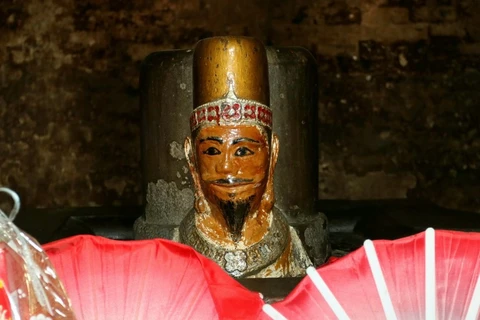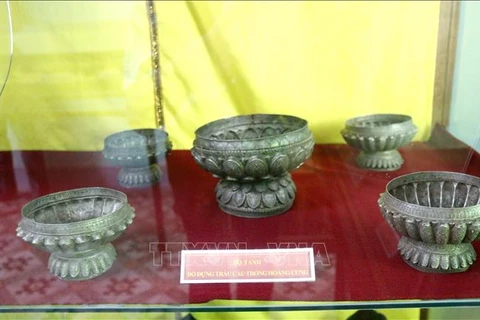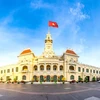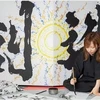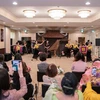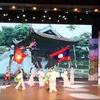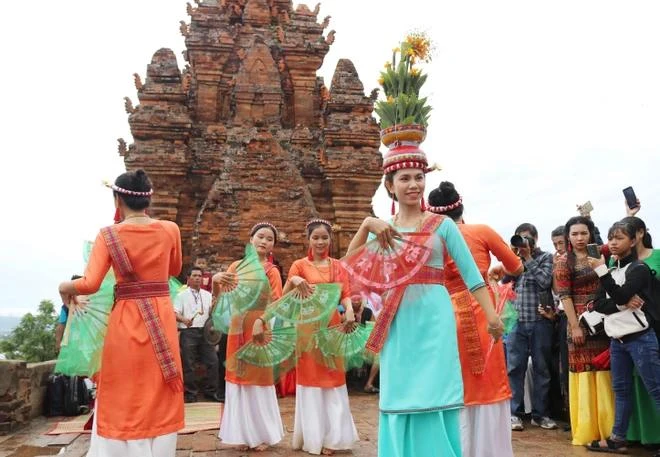
Ninh Thuan (VNA) - The sixth Cham Ethnic Cultural Festival will take place in Phan Rang - Thap Cham City in the south central province of Ninh Thuan from September 27-29 with the participation of over 400 artisans, artists, performers, and athletes from the Cham ethnic community across nine provinces and cities.
"Preserving and Promoting the Cham Ethnic Cultural Identity in the Era of Integration and National Development," is the theme of the festival, co-organised by the Ministry of Culture, Sports, and Tourism and the People's Committee of Ninh Thuan province. It will see the participation of other localities, namely Binh Dinh, Phu Yen, Binh Thuan, An Giang, Tay Ninh, Quang Nam, Da Nang city and Ho Chi Minh City.
The festival offers an opportunity to honour and introduce the traditional cultural values of the Cham people to both domestic and international audiences. A primary goal of the event is to promote the image of Vietnam as a culturally rich country, with unity and harmony among ethnic groups. This demonstrates the Party and State's commitment to preserving and promoting the cultural values of the Cham people.
It also seeks to raise awareness and responsibility in building and developing the Vietnamese culture and people.
The festival will also contribute to strengthening the country's position internationally, by promoting the potential and advantages of the southern and south-central provinces to businesses and tourists, both domestic and foreign. It will attract investment in tourism, and accelerate the development of key tourist areas in these regions.
According to the organisers, the festival will feature a wide range of cultural activities. These include performances and presentations of traditional Cham festivals and rituals, exhibitions showcasing and promoting cultural and tourism products, as well as local culinary traditions, and demonstrations of traditional Cham handicrafts such as brocade weaving and pottery making.
There will also be a public art festival, a traditional Cham costume showcase, an exhibition titled "The Unique Culture of the Cham People within the Vietnamese Cultural Community," a photography exhibition on the vibrant culture of the Cham people alongside the nation's development, and an exhibition of fine art related to Cham culture.
In addition, the festival will host traditional sports activities such as competitions in six disciplines, including tug-of-war, stick pushing, men's mini football, men's volleyball, women's water carrying, and cross-country running for both men and women.
As part of the festival, a tourism conference titled "Promoting Cham Cultural Heritage in Tourism Development" will also be held, featuring participation from cultural and tourism experts, as well as cultural researchers, to discuss ways to connect cultural heritage with local tourism development.

The highlight of the opening programme will be the announcement and recognition of two national treasures - the Po Klong Garai King statue and the Phuoc Thien stele - both part of the Cham cultural heritage in Ninh Thuan.
The Po Klong Garai King statue, a national treasure, is a sandstone sculpture consisting of a Yoni pedestal and a Linga pillar with the deity's face.
It is worshipped by the Cham people at the Po Klong Garai temple in Do Vinh ward in Phan Rang - Thap Cham city, and was constructed in the 13th-14th centuries.
The Phuoc Thien stele, discovered in 1992 in Phuoc Thien hamlet, has ancient Cham script inscribed on both sides. Based on the content and script style, scientists have dated the stele to the late 8th century./.
